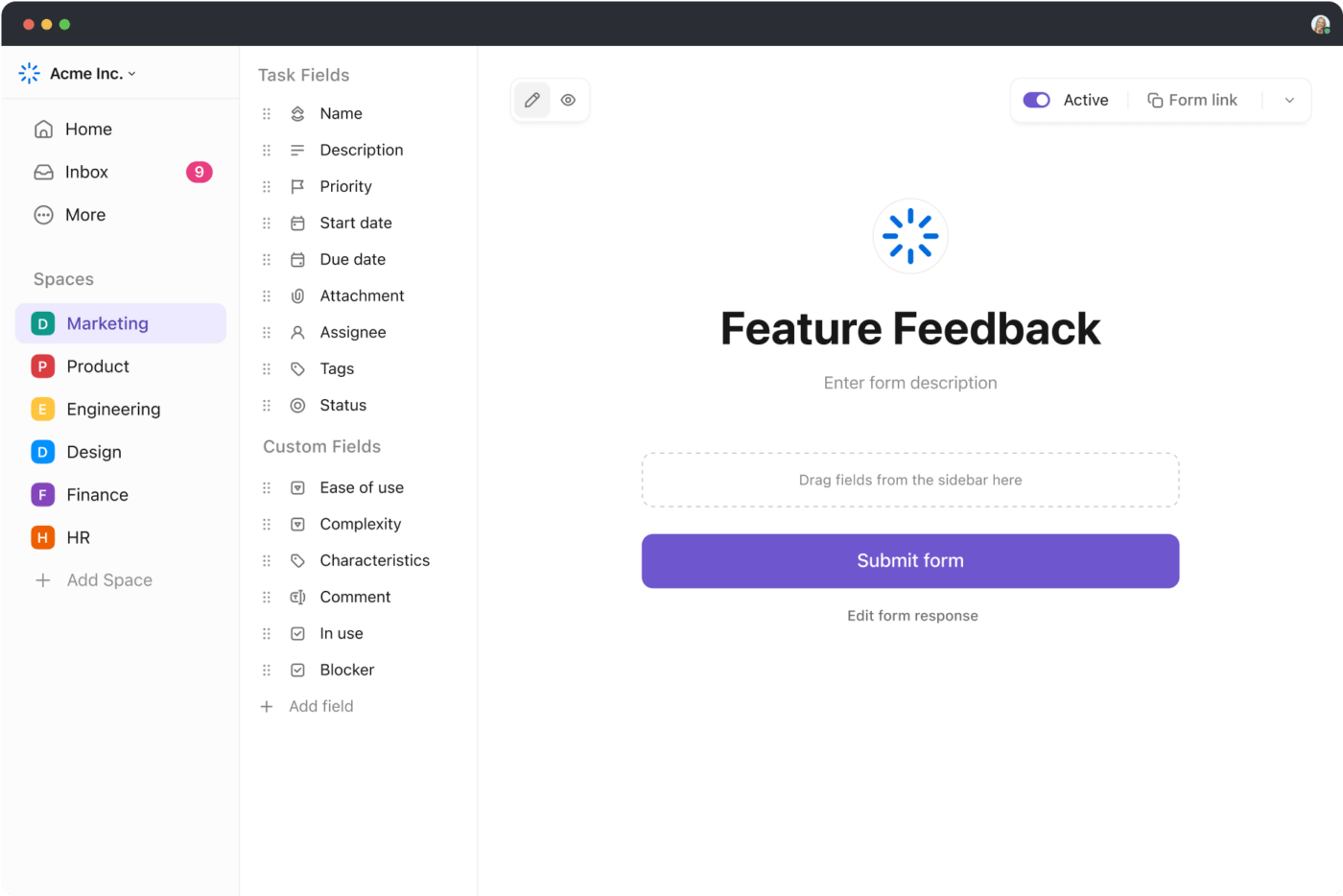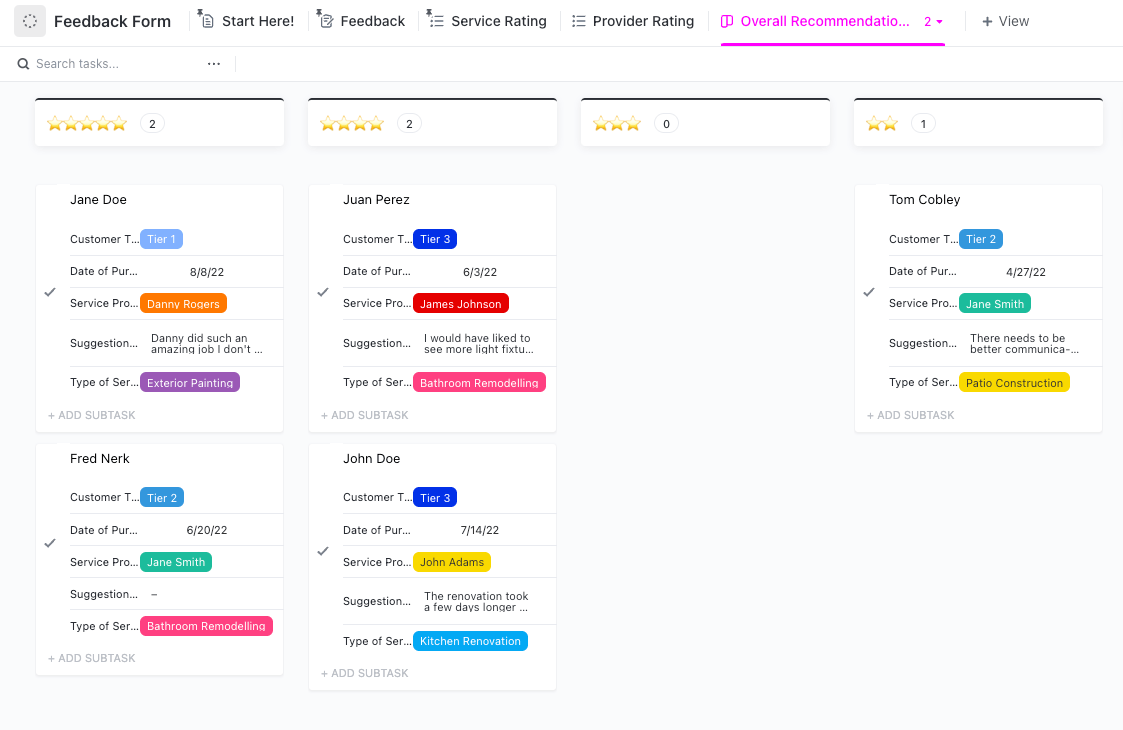The Power of Influence: How to Ask for Client Testimonials That Help You Grow

Sorry, there were no results found for “”
Sorry, there were no results found for “”
Sorry, there were no results found for “”
In an era where consumer confidence in traditional marketing methods is waning, customer testimonials emerge as invaluable assets. They offer genuine insights into your brand’s trustworthiness and credibility.
However, obtaining positive client testimonials is more than just a stroke of luck—It’s about actively engaging with satisfied customers.
While you may receive the occasional feedback without asking, the true impact lies in proactively requesting testimonials. But how do you go about this delicate process?
In this article, we’ll show you precisely that! Without delay, let’s explore how to ask for client testimonials and how they set your business apart.
Testimonials are authentic statements or recommendations from customers about a product, service, or brand. These testimonials typically highlight positive experiences, benefits gained, and results achieved, aiming to influence others’ purchasing decisions.
The more advocates you have, the fewer ads you have to buy.
Customer testimonials come in various forms, including written statements, video recordings, or ratings and reviews. Here are some key points highlighting the importance and benefits of testimonials in business and digital marketing:
Now, let’s delve into successful techniques for requesting customer testimonials.
Getting testimonials from clients can seem challenging, especially for freelancers. But fear not! There are effective methods for gathering these reviews without coming across as needy.
Below are various techniques for making a successful testimonial request. These strategies aim to simplify the process and ensure a positive response from your client. Let’s discover how you can ask for a testimonial effectively.
Timing is crucial when requesting testimonials. Ideally, ask for testimonials after the client has experienced success with your product or service. Ensure they’re satisfied with the outcomes and your working relationship.
For example, if you provide website content services, consider asking for testimonials after the content is live on their site. Allow time to gauge its performance.
Similarly, for products or services that require testing, such as software, allow clients time to use them before requesting testimonials.
If it is an ongoing relationship, aim to ask for feedback immediately after a positive interaction. Alternatively, ask for a testimonial upon successful project completion when client satisfaction is at its peak.
By choosing the right moment to request testimonials, you increase the likelihood of receiving genuine and positive feedback.
Collect responses quickly and conveniently with the ClickUp Form View feature.
It seamlessly captures client feedback and instantly routes it to the right team for action. The best part? With conditional logic, forms dynamically update based on responses, ensuring you capture relevant information efficiently.

You can also use a product feedback software to gather feedback from various channels like feedback forms, in-app surveys, email, and social media.
These tools simplify the feedback collection process while enabling you to use insights from the responses to improve your products or services.
Utilizing social media platforms is a powerful strategy for gathering organic feedback. Encourage clients to share their positive experiences on platforms like Facebook or LinkedIn, either through written posts or short video testimonials.
When customers express satisfaction on social media, it boosts your brand’s visibility and credibility without requiring additional effort. Direct clients to specific social media channels where your target audience is active. This further enhances the reach and impact of their testimonials.
In summary, employing social media offers a public stage for collecting and sharing customer testimonials. It ultimately strengthens your brand’s reputation and attracts new clients.
Offering incentives motivates clients to provide testimonials. Examples include offering a small gift card, a discount on future projects, or referral discounts for each client they refer. These incentives should be relevant and worthwhile to your customers.
Providing rewards such as freebies or special offers gives customers a compelling reason to share their feedback. Below are the pros and cons of this method:
So, while offering incentives boosts customer engagement, it’s crucial to maintain authenticity in your approach.
To request testimonials efficiently, utilize text messages or email after a purchase or service completion. Send personalized messages expressing your gratitude and asking for their opinions. Keep the requests concise and easy to respond to.
Emails offer an effective method for soliciting testimonials, especially if you already have a mailing list of customers. However, ensure your email stands out amidst the clutter by keeping it natural and engaging.
Formal testimonial requests hold particular power, especially for high-profile clients like CEOs. Clearly outline the request, offering options for written or video testimonials and providing guidance and examples. Input customer details to tailor content, driving engagement and satisfaction.
Remember, you can always skip drafting emails from scratch with ClickUp Brain— it lets you craft email in seconds:

Text messages also offer a fast and direct way to request testimonials, although they may have limitations in eliciting detailed feedback.
Here are the pros and cons of each method:
Both email and text messages have their advantages in obtaining testimonials. However, it’s essential to tailor your approach based on your audience’s channel preferences and your relationship with them.
Regardless of the method, a courteous, concise, and relevant request is key to receiving valuable client feedback.
Include clear calls to action (CTAs) in your marketing materials, encouraging satisfied clients to share their experiences through testimonials. Use persuasive language to prompt action and highlight the benefits of leaving a testimonial.
Clearly outline the steps for submitting feedback and make it as easy as possible for clients to submit a testimonial. For example, direct them to a designated testimonial submission form on your website. Ensure you keep the form short and simple so people don’t drop off. Alternatively, provide an email address where they can send their feedback.
Incorporate visually appealing buttons or links to guide clients to the testimonial submission page on your website or preferred platform. By simplifying the process, you increase the likelihood of clients providing testimonials.
Establish a dedicated testimonial page on your website to prominently showcase client feedback. Whether it’s a long page featuring all testimonials or a gallery linking to individual reviews, make it easy for visitors to access and navigate.
Highlight different aspects of your product or service with each testimonial, demonstrating its versatility and benefits. Encourage clients to share their testimonials and regularly update the page with new feedback.
Include visuals like photos or videos to make the page more engaging for potential customers. Ensure effective organization and presentation for maximum impact.
To simplify the testimonial process for clients, provide clear instructions, and minimize barriers to submission. Consider your clients’ busy schedules and ensure the process is easy and fast.
To efficiently manage testimonials and streamline your workflow, use feedback forms. For instance, the ClickUp Feedback Form template helps you pinpoint specific pain points and quickly prioritize improvements. This template allows you to effectively collect, organize, and leverage client testimonials.
Apart from requesting a rating, the template also includes fields for your clients to give their reasons for the rating and offer you suggestions for improvement.
Additionally, utilizing a questionnaire template streamlines the process of gathering feedback. A questionnaire template provides a structured format with predefined questions and response options, simplifying the creation of customized surveys.
For video testimonials, avoid requiring clients to download extra software; provide direct links instead. Keep any questions short and direct, and offer prompts to guide clients.
Use referral marketing to gain testimonials and expand your client base. When engaging with clients, inquire if they know others who could benefit from your services. If they provide a referral, you may be able to secure a new prospective client.
If not, pivot to requesting a testimonial to showcase your partnership.
By cultivating brand ambassadors through referrals and testimonials, you amplify your business’s credibility and attract more clients.
However, a clear framework is essential to use customer feedback effectively. That’s where the ClickUp Customer Contact Form template comes into the picture.
This template simplifies the process of collecting customer concerns and feedback. Quickly address customer inquiries, collect essential data for research and marketing, and demonstrate your commitment to customer satisfaction with this easy-to-use contact form.
Integrating client feedback into your customer profile templates further enhances your understanding of your target audience. These structured documents collect and organize relevant information about buyer demographics, preferences, behaviors, and needs. They empower marketing teams to run more effective campaigns and strengthen customer relationships.
Timing is key; aim to request referrals after assisting clients in achieving their objectives. Ultimately, satisfied customers are the best advocates for your brand and are likely to recommend your services to others.
Collaborating with clients to co-write testimonials ensures authenticity and alignment with brand messaging. Guide clients through the process to ease any uncertainties they may have in expressing their experiences.
Start by asking open-ended questions and incorporate their feedback into the testimonial. Address any concerns or negative feedback along the way. This approach builds trust and results in genuine testimonials that showcase the value of your offerings. Always obtain approval before sharing testimonials publicly.
Streamline document management with ClickUp Docs. Collaborate with clients in real time on shared documents, enabling seamless editing, suggestions, and feedback exchange. Utilize pre-defined questions or prompts to guide clients through the process.

Conducting interviews with satisfied clients yields valuable insights and authentic testimonials. It allows you to ask open-ended questions, enabling clients to provide qualitative feedback about their experiences.
You can schedule these interviews via video calls or in-person meetings, depending on the client’s preference.
Enhance the process with ClickUp Brain. This AI-powered tool helps you input notes and interview feedback and swiftly analyzes them to provide concise meeting summaries.

On the other hand, short testimonials offer a quick and convenient way for busy clients to provide feedback. Requesting concise responses, such as one to two sentences, makes it easier for clients to participate, even with time constraints.
Offer multiple submission options, such as social media takeovers, live interviews, or podcast appearances.
For clients with whom you’ve established a strong relationship, consider more involved approaches, like filming formal interviews at their office or via Zoom. Enable clients to provide testimonials in a format that best suits their preferences and accessibility.
Ensuring a smooth collection of client testimonials is crucial for building trust and credibility. However, finding the right approach and format can be overwhelming. That’s where ClickUp comes in—a platform designed to simplify and optimize every aspect of your workflow.
ClickUp offers tools that make gathering and managing client testimonials a breeze.
In this section, we’ll explore how ClickUp Form View, ClickUp Brain, and ClickUp CRM empower businesses to collect and leverage client testimonials effortlessly.

ClickUp’s Form View offers a versatile and user-friendly interface that simplifies the collection of customer testimonials and feedback. Here’s a closer look at its key features:
With ClickUp’s Form view, gathering and managing client testimonials is so much easier.

ClickUp Brain revolutionizes how businesses communicate with clients through its advanced AI features. Here’s how it elevates your client outreach efforts:

With ClickUp Brain, you can build templates and systems for an effective client feedback workflow. It helps you enhance your client outreach strategies, drive engagement, and build lasting relationships.

ClickUp CRM helps you set up recurring and personalized outreach for testimonials from your clients. In addition, it is an excellent tool to optimize client management processes and drive growth. Here are the key features:
If you’re looking for a starting point to store and manage all your customer information—all in one place—the ClickUp CRM template is your answer. Collaborate with your team and visualize your sales pipeline easily with this fully customizable template to streamline client outreach and enhance customer satisfaction.
The template includes custom statuses like ‘closed won,’ etc., so you can segment your client database better for personalized communication.
You don’t need to be an email marketing guru to acquire valuable client testimonials. Simplicity and creativity are your best assets.
Here are some tips to make the most of your email outreach for testimonials:
Subject: Your Feedback Needed!
Message:
Hi [Client’s First Name],
I hope this email finds you well!
I’m reaching out to ask for a small favor. As I continue to enhance my services, I’m gathering testimonials from satisfied clients like you to feature on my website.
Would you be willing to share a brief testimonial about your experience working with me? It doesn’t have to be lengthy—just a few sentences expressing your thoughts would be fantastic.
To see examples of testimonials from other clients, you can check out our testimonials page [insert link].
Please feel free to reply to this email with your testimonial. Your input means a lot to me and will help others learn about the quality of our services.
Thank you sincerely for your time and support.
Best regards,
[Your Name]
Crafting well-designed testimonial request emails encourages responses, enhancing brand credibility. However, strategic approaches and compliance are essential for success.
In the business world, customer testimonials are like gold dust—they hold immense value, offering social proof to potential buyers. But how do you secure these valuable endorsements? The answer lies in nurturing strong customer relationships.
Here are a few points to remember in this respect:

Pro Tip: Utilize free feedback form templates to ensure consistency in data collection and easily analyze feedback to identify trends. Incorporate this feedback into your decision-making processes to continuously refine your offerings, enhance customer experiences, and drive long-term success.
Read more: Customer lifecycle marketing
Quality testimonials are indispensable assets that build your brand’s credibility and attract new customers. Remember to approach clients respectfully and make the process convenient.
Utilize platforms like email, social media, and your website to request testimonials and consider incentives to drive more participation. Keep in mind that online reviews and testimonials serve as social proof, influencing purchasing decisions and driving business growth. With a strong ally like ClickUp, you can collect testimonials and manage client feedback better. Centralize your customer testimonial management, track client feedback, and optimize your workflow for maximum efficiency and growth with ClickUp.
Ask for a testimonial by crafting a personalized testimonial request email expressing gratitude for their partnership. Politely ask if they would be willing to share their positive experiences with your product or service. Provide clear instructions on how they can submit their written or video testimonial, ensuring convenience and ease of response.
When making a testimonial request, approach individuals respectfully and express appreciation for their collaboration. Send testimonial request letters that clearly outline the purpose of the testimonial and how it would benefit your business. Provide guidance or prompts to help them structure their testimonial effectively. Ensure the process is convenient and hassle-free for the respondent.
Timing is crucial when asking for a client testimonial. Aim to request feedback when the client has recently experienced success or achieved a milestone with your product or service. Additionally, consider asking for testimonials after delivering exceptional service or receiving positive feedback. The goal is to capture their enthusiasm and satisfaction while it’s fresh in their minds.
© 2025 ClickUp